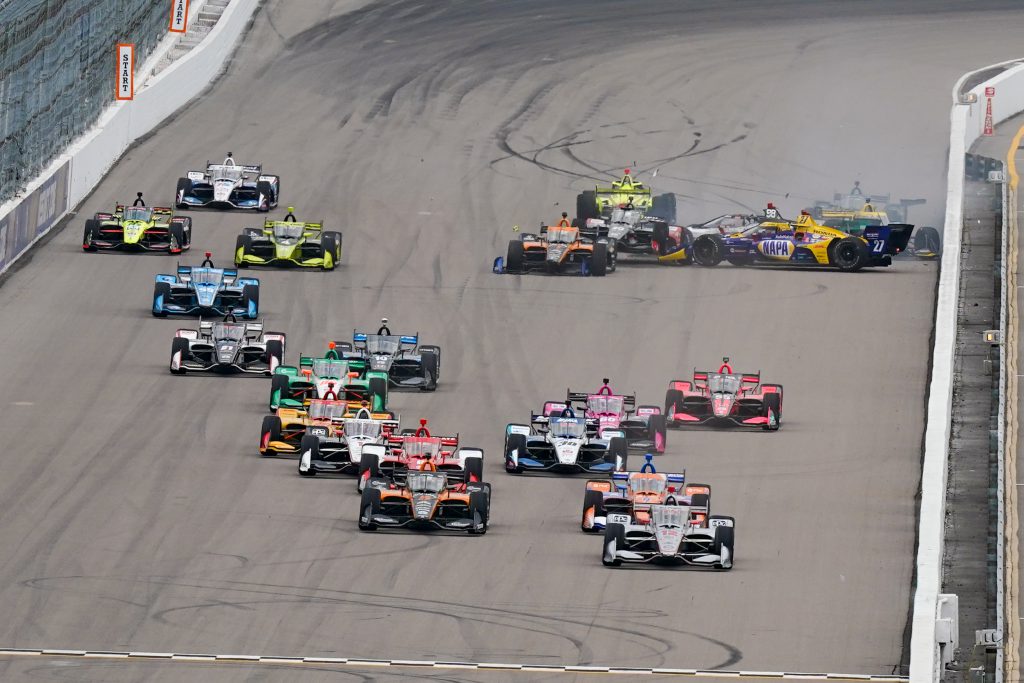“I don’t think I made a single pass on track,” said Colton Herta after the first race of the weekend at Gateway, and he wasn’t the only one. It’s fair to say the event did not deliver the thrilling on-track action expected of a medium length oval.
At this point, it’s important to temper that to the current climate. IndyCar is coming into these venues with the new aeroscreen device for the first time, sometimes with new tyres to compensate as well. They add yet another variable into the pot in a year where there has been little track time and no significant testing. It leaves a lot of guesswork at the route of the product on track, without alternative.
For that reason, along with trying to keep a championship and events on its calendar running in COVID-19, IndyCar deserves a lot of credit even if the on-track action hasn’t always delivered.
Gateway also. It doesn’t deserve to be criticised after managing to put on a very big weekend indeed as the NASCAR Trucks and ARCA Series joined Indy Pro 2000 on-track in Illinois, creating what is the most packed undercard we’ve seen at an event this season with fans in attendance.
So much work went into the event from the Gateway organisers just to make the races happen. Unfortunately, the IndyCar races at least didn’t deliver the kind of thrilling spectacle we might expect.
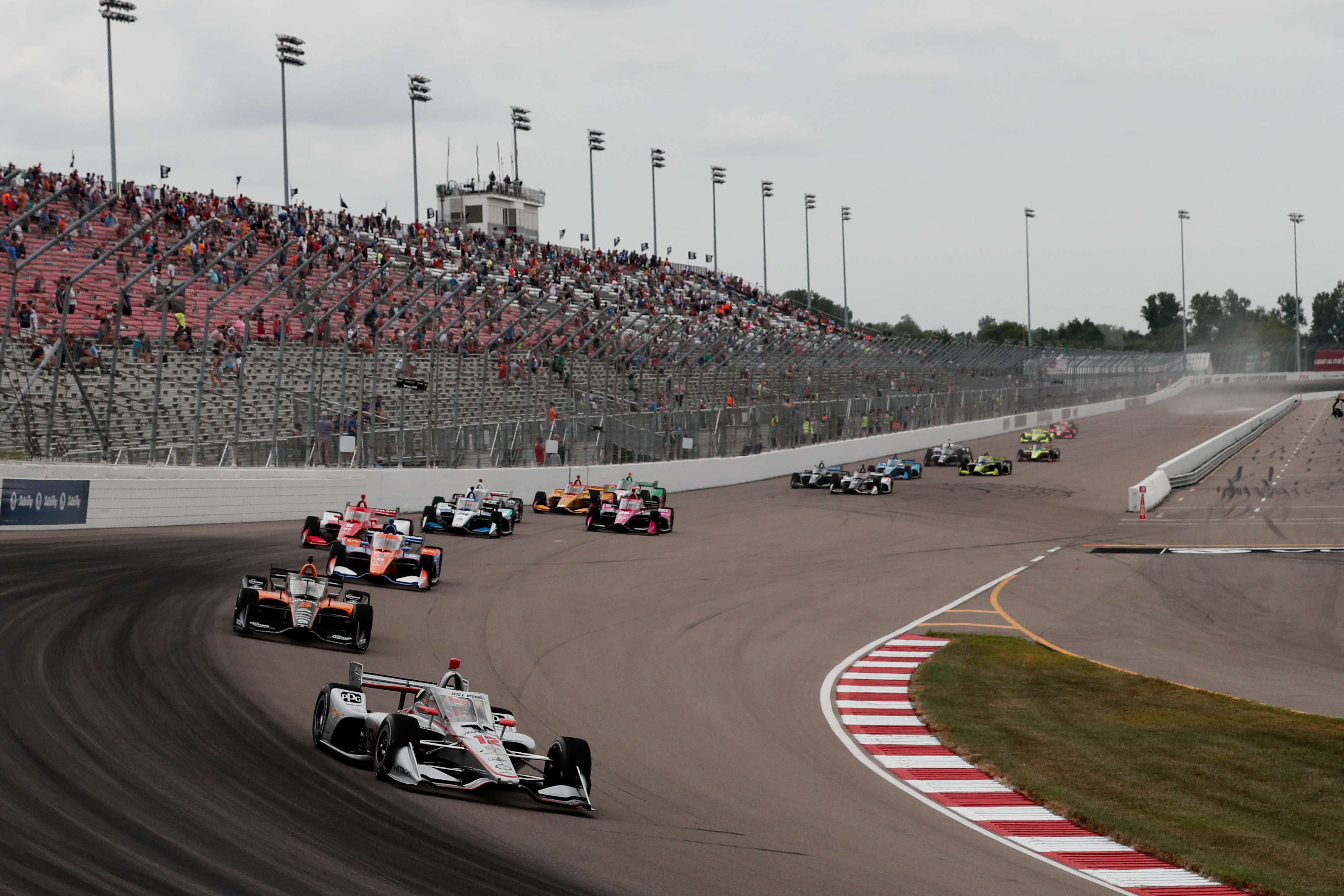
In the first race won by Scott Dixon, passing was a bit easier, at least outside of the top five. Takuma Sato had to pull off a high-risk move to go around the outside of Pato O’Ward for second late in the race, but most of the other passes up front came through pitstops and strategy.
In race two, Josef Newgarden established the lead on the final pitstop, in a race where drivers tried drastic undercut or overcoat strategies to try and avoid being held in big trains of traffic. The increased temperatures on the day appeared to make overtaking even more difficult on merit, and with basically no tyre degradation, that made holding position much easier than you would normally expect in an ultra-competitive series.
Asked if he felt that IndyCar should be looking to alter aero, power and tyre deg to spice up the action, Newgarden said: “Definitely, yeah. I would say the ratio here was not ideal. It’s just hard sometimes to get that perfect. Yeah, you need something here. You need more tyre degradation, more drop-off, a lot more power.
Gateway is narrow and encourages single-file racing, so making a race work with overtaking there without making the package too gimmicky is always going to be difficult
“In truth, a lot more power is coming,” he added, referring to the next rules package which is set to add another 200bhp.
“That’s on the plan, is to introduce quite a bit more power to the cars. I think if we had that with similar aero, it would have made a difference, or more tyre drop-off.
“I’m quite surprised we didn’t have more tyre drop-off. I think Firestone did too good of a job. I was expecting a lot more with heavier cars. I expected the cars to be more difficult over a run, but they weren’t. The tyres were really good. You almost could get faster through the runs sometimes.
“Yeah, not the right ratio. We just have to tune on it. It’s an experiment every time.”
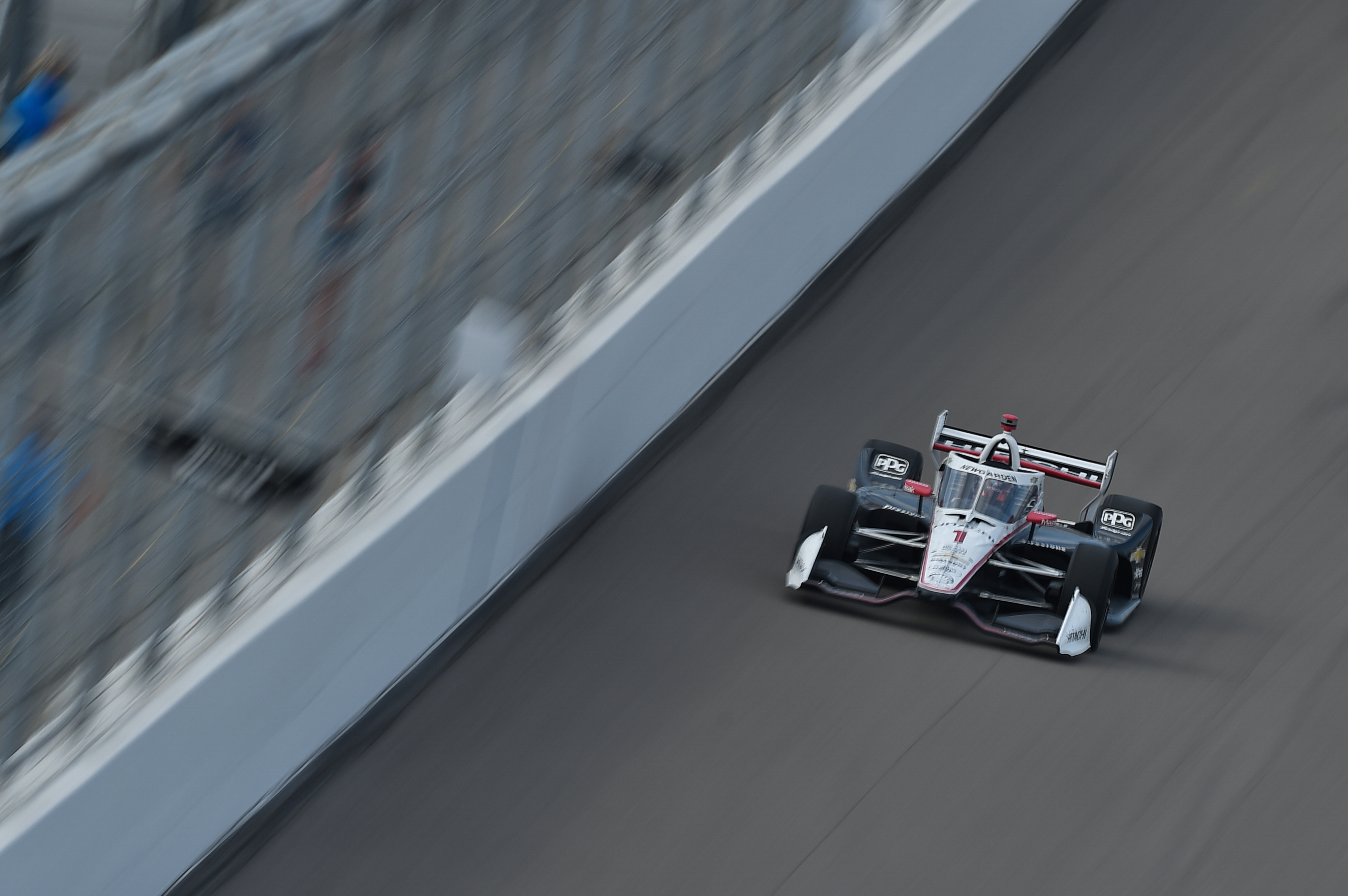
As a follow-up, Newgarden was asked whether the aeroscreen had affected the ability to pass. The device has added weight at the front and up high to the car, which has forced teams to alter set-ups. But ultimately, it hasn’t made overtaking much more difficult compared to last year at most venues.
“No, I wouldn’t say so,” said Newgarden in response. “I think it’s always historically been tough here at this track. Some years have been a little better just depending on that package, how much downforce you have versus power. Some years have been a little simpler.
“I don’t think the aeroscreen has added a negative effect because of that. It was just the perfect storm.
“The amount of downforce for the tyre deg and horsepower was not the right package for being able to pass. It was kind of easy to run a lap over and over and repeat it. You couldn’t really make a difference to everybody even as the tires started to drop off.”
Again, this isn’t a declaration that IndyCar has done a terrible job given the circumstances of the year. But the circumstances of a less-than-ideal car package can be exacerbated in 2020 due to the number of double-headers included covering for the events lost earlier in the season.
Perhaps in the past after one bad race, it would be quickly forgotten and on to the next race. With myriad double-headers, that’s more difficult.
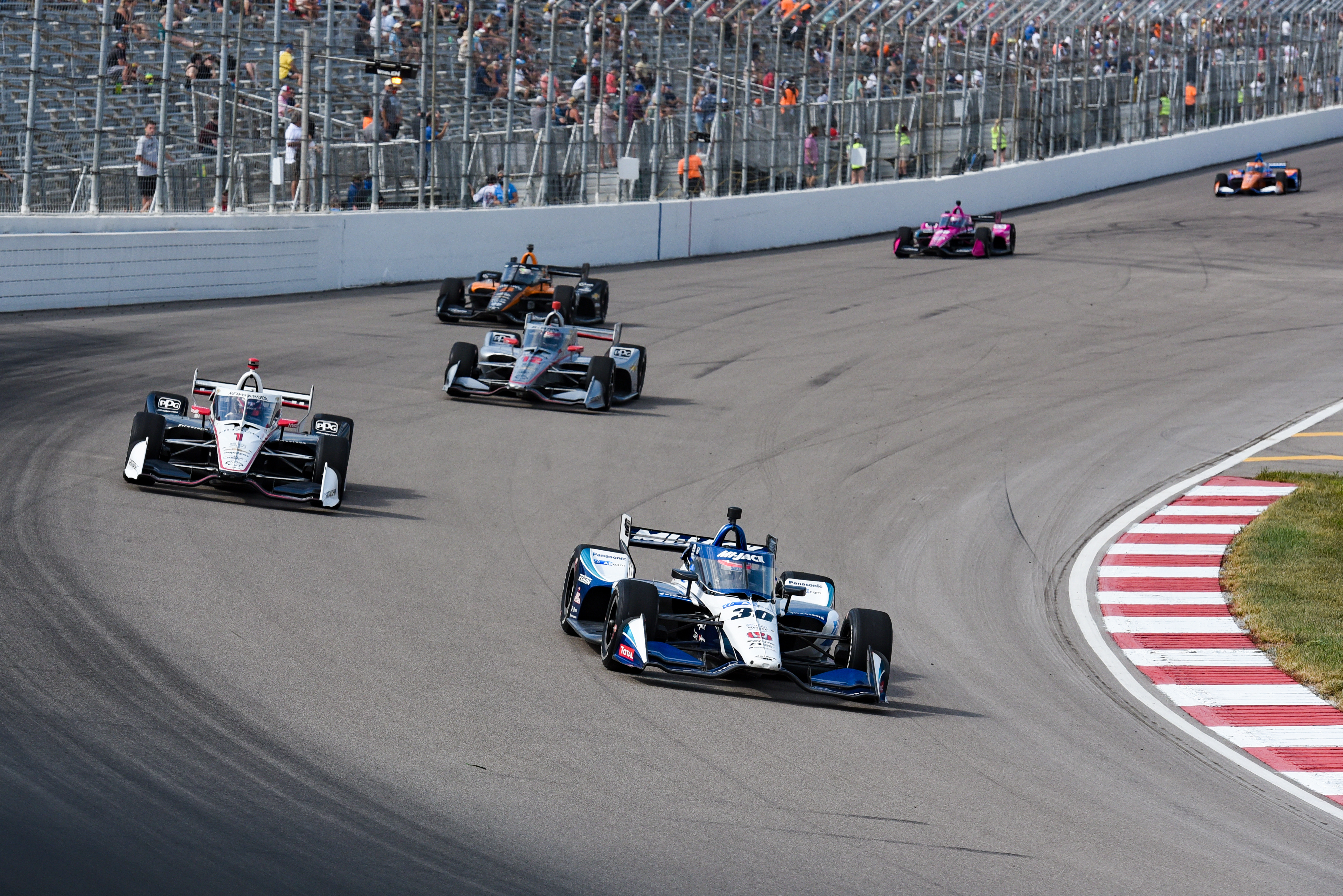
With the short/medium oval package, in particular, Richmond was supposed to return to IndyCar this season but wasn’t able to due to the effects of the coronavirus. So the double-headers at Gateway and Iowa have given IndyCar and its tyre supplier Firestone double the amount of data from those races than before, which should allow better packages in 2021.
While Newgarden is right to point to the increased power from the new engine, it’s not yet clear when that new power unit will come in and it certainly won’t be next year. So there’s work to do before that power comes. IndyCar raised boost levels for qualifying at the Indianapolis 500 to negate the effect of the aeroscreen, so it has that capability if it wants to utilise it in the future.
Ultimately, Gateway is narrow and encourages single-file racing, so making a race work with overtaking there without making the package too gimmicky is always going to be difficult.
All in all, strategy races are commonplace in IndyCar, and maybe it will decide it is happy with the product at Gateway, but the immediate reaction from drivers and observers appeared to be that of frustration with the lack of ability to overtake. When the fifth and sixth-placed drivers can’t pass a driver two laps down in the closing stages, that’s usually a sign of an issue…
Veach under fire
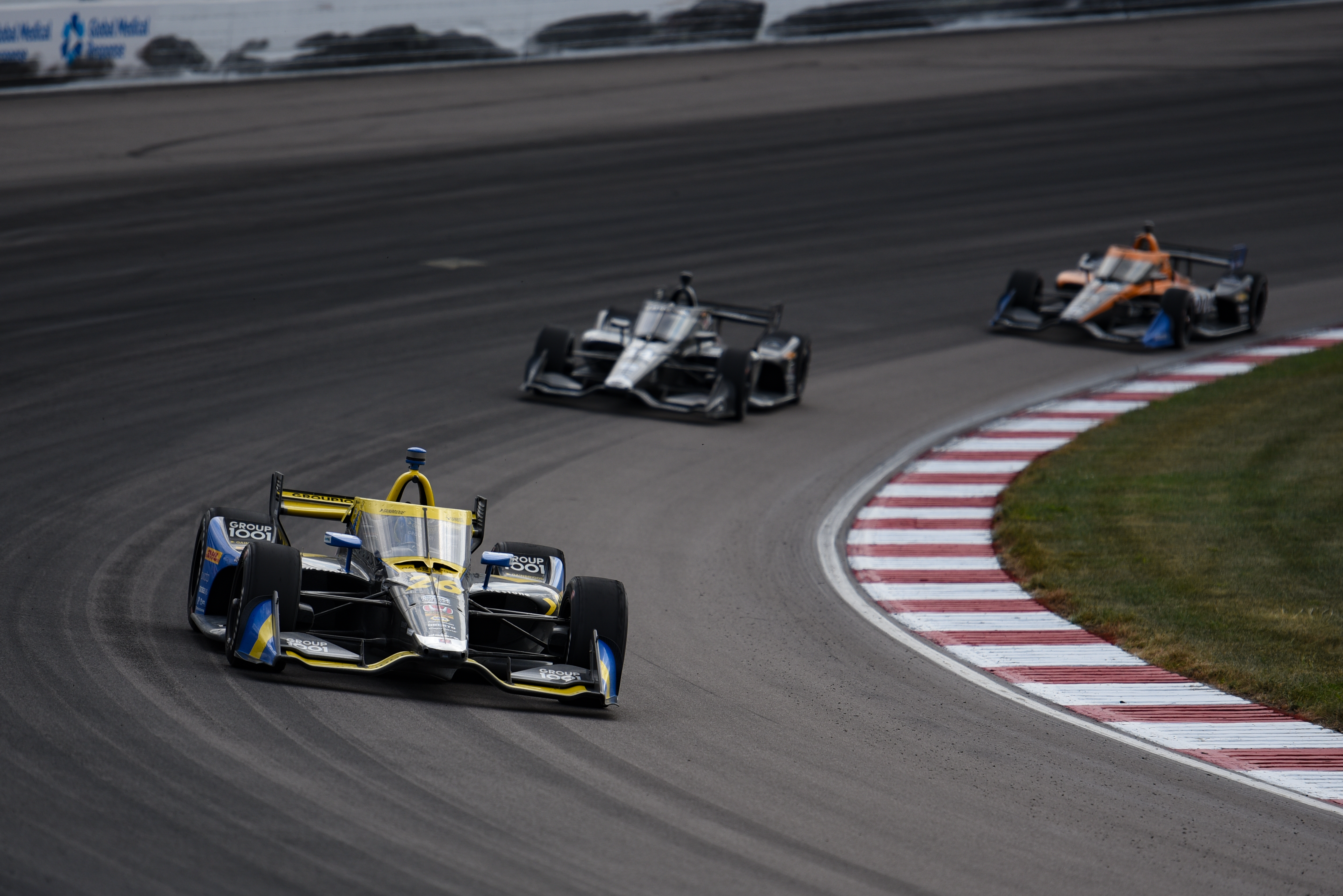 Zach Veach was in the wars over the Gateway weekend. And not just because Paul Tracy called him Kevin on the race two broadcast.
Zach Veach was in the wars over the Gateway weekend. And not just because Paul Tracy called him Kevin on the race two broadcast.
It’s rare to hear one of the nicest drivers at the top level of motorsport, Dixon, call out another driver, not least in a quote for an official IndyCar press release. Nonetheless…
“We got into a little bit of traffic in those sequences, and Zach Veach totally screwed us,” said Dixon. “He was laps down and was totally slowing everyone down. I’m not sure if he was trying to help his teammate [Colton] Herta, but he screwed my race and [Takuma] Sato’s race.
“I’m not sure how that happens when you are fellow Honda teams. I would have expected something else, especially with the other manufacturer running P1-4. It was a decent points’ day, and we just made the most of what we had.”
IndyCar doesn’t have a blue-flag system, and racing to un-lap yourself is common practice in the series. But due to the difficulty in passing, Veach and rookie Oliver Askew proved to be rolling barriers despite not being on the lead lap. Dixon and Sato fought for the race one win and clearly had the pace to at least be in contention at the end but for being held up.
Unfortunately, Veach had been forced to pit immediately after a prior stop for a loose wheel nut, which took him well out of contention in the race. And what was he supposed to do, just let people past? It’s a tricky scenario, especially when there’s no blue flag to take that decision out of the driver’s hands.
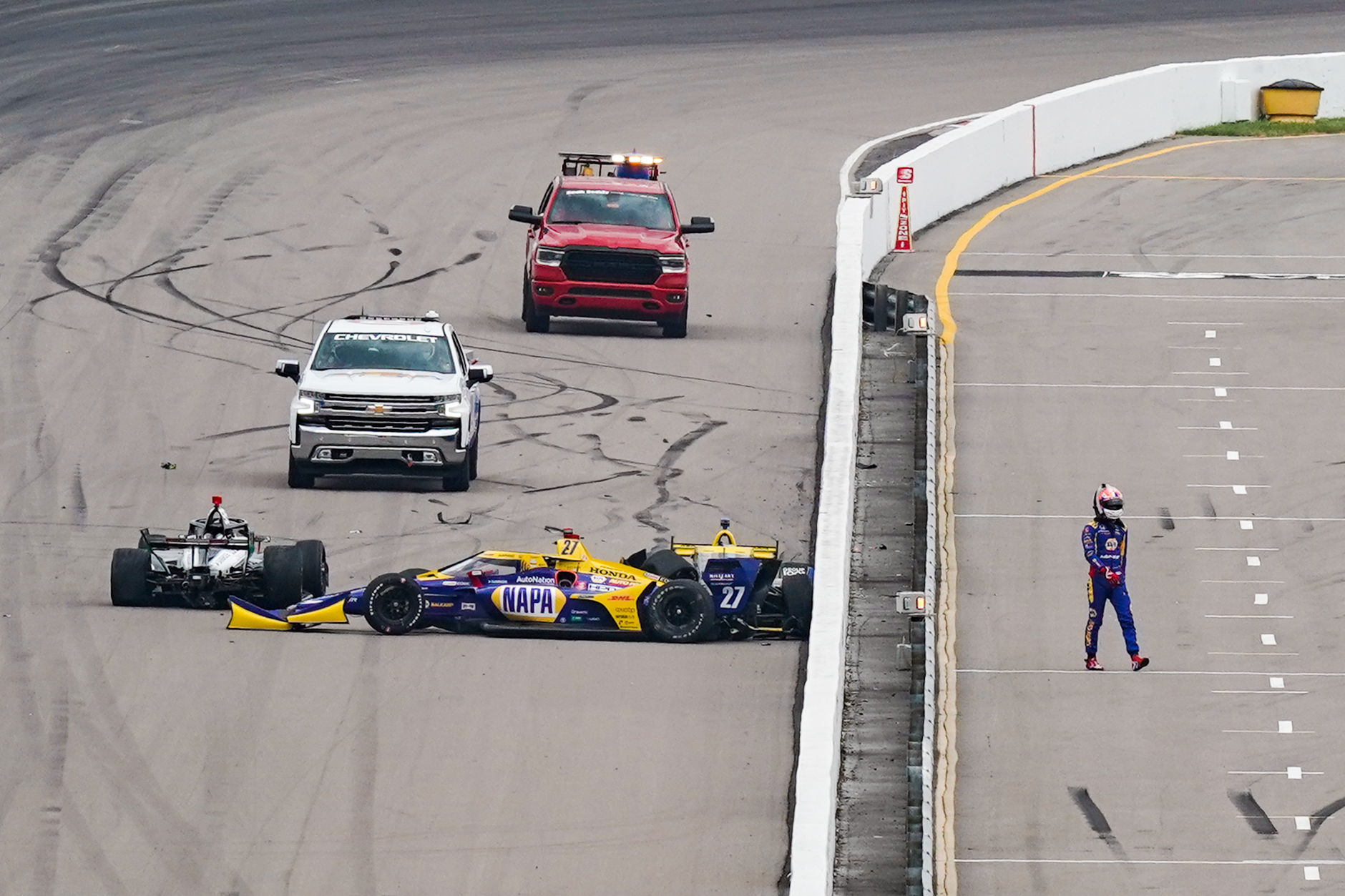
The day before, Veach had been called out for his role in the restart crash that marred race one.
The pack concertinaed at the start and it backed a number of drivers up. Alex Palou got out of line trying to avoid Alexander Rossi, who in turn was speared by Simon Pagenaud after he had been hit by Oliver Askew. Better to watch the video as it’s a tricky one to explain!
CRASH at the start!
The @WWTRaceway @IndyCar doubleheader weekend is off to a wild start. Watch on NBCSN or stream here: https://t.co/THKlb49aWT pic.twitter.com/VJqQYGUq5B
— IndyCar on NBC (@IndyCaronNBC) August 29, 2020
I can see why Palou and Askew were given penalties for causing avoidable incidents, but I really think it was out of Palou’s control. He got on the gas and then checked up as the car ahead did, and if anything he avoided an initial crash. A penalty felt harsh even if it was within the letter of the law. The drivers behind had a little more time to react, and perhaps that’s why some criticised Veach as he ploughed into the incident wreckage.
“The situation with [Simon] Pagenaud on the start, I think I had a better run than a lot of the guys in front of me, and I was faced with the decision to either hit Pagenaud head-on or get to the bottom,” explained Veach.
“The bottom was moving, but unfortunately those guys got on the brakes at the same time I did. But for whatever reason, I couldn’t get the car stopped.
“I got to the [brake] pedal and I pumped it – by that time I was too close to stop the car and struggled to get the brakes engaged. I hate it for the people involved, and, obviously, it makes us look a little stupid.”
Ed Carpenter, who had contact with Veach at the start of the Indy 500 the week before, said: “I am pretty bummed out. Second race in a row that I’ve been representing one of the Forces, the U.S. Air Force this weekend.
“I was basically out of the race before it started, also for the second race in a row. Zach Veach is the current theme right now. He obviously didn’t see the yellow flag or the bright yellow car spinning on the track.”
It’s hard to blame Veach if he had a brake issue in hindsight.
Ultimately it was one of those incidents, and we’ve seen them this season already. Iowa where Herta didn’t hear the caution being waved off and hit Rinus VeeKay. Askew and Daly crashed on a restart in the Indy 500, and there have been more in previous years.
Restarts bring cars close together and while overtaking is so hard on the track, drivers are always going to place emphasis on gaining a jump at the start but also have a responsibility to their rivals to be safe.
In that sense, ‘police yourselves’ on a restart is sensible, but what about a minimum speed coming to the green? That may help stop the checking up, which is ultimately what causes the accidents in most cases. Food for thought.


